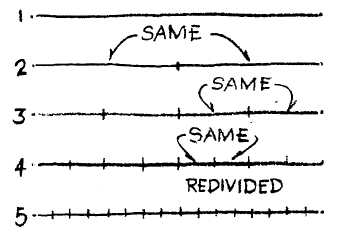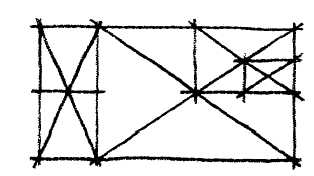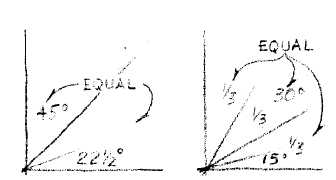Figure 5-60.-Bisecting a line by visual comparison.
Dividing Lines and Areas Equally
Your ability to divide lines and areas into equal
parts is necessary in arriving at many of the
common geometric forms required in sketching.
The simplest method of bisecting lines is by visual
comparison, as shown in figure 5-60. The entire
line is first observed and weighed optically to
determine its fulcrum or point of balance. Each
half is compared visually before the bisecting
point is placed. This procedure can be repeated
any number of times to divide a line into any
number of equal divisions, merely by dividing and
redividing its line segments.
Centers of rectangular areas are easily
determined by drawing their diagonals. If
necessary the halves can be divided with diagonals
for smaller divisions, as shown in figure 5-61.
Figure 5-61.-Locating centers by sketching diagonals.
Figure 5-62.-Sketching angles by visual comparison.
Sketching Angles
The 90-degree angle is predominant in the
majority of your sketches. Thus it is important
that you learn to sketch right angles accurately,
even if it entails checking them with the triangle
occasionally. Frequently, the perpendicular edges
of your paper can serve as a visual guide for
comparison. It is also helpful to turn your sketch
upside down; non-perpendicular tendencies of
horizontal and vertical lines will become evident.
Shaping right angles correctly will give your sketch
stability, without which effectiveness is lost.
A 45-degree angle is made by dividing a right
angle by visual comparison; and a 30-degree or
60-degree angle, by dividing the right angle into
three equal parts. The 30-degree or 45-degree
angle may be divided into equal parts in the same
manner. (See fig. 5-62.) Always start with the right
angle for the most accurate estimation of angle
shape.
Sketching Circles and Arcs
Perfectly round circles are the most difficult
to draw freehand. Figure 5-63 shows methods of
Figure 5-63.-Methods of sketching circles.
5-31







